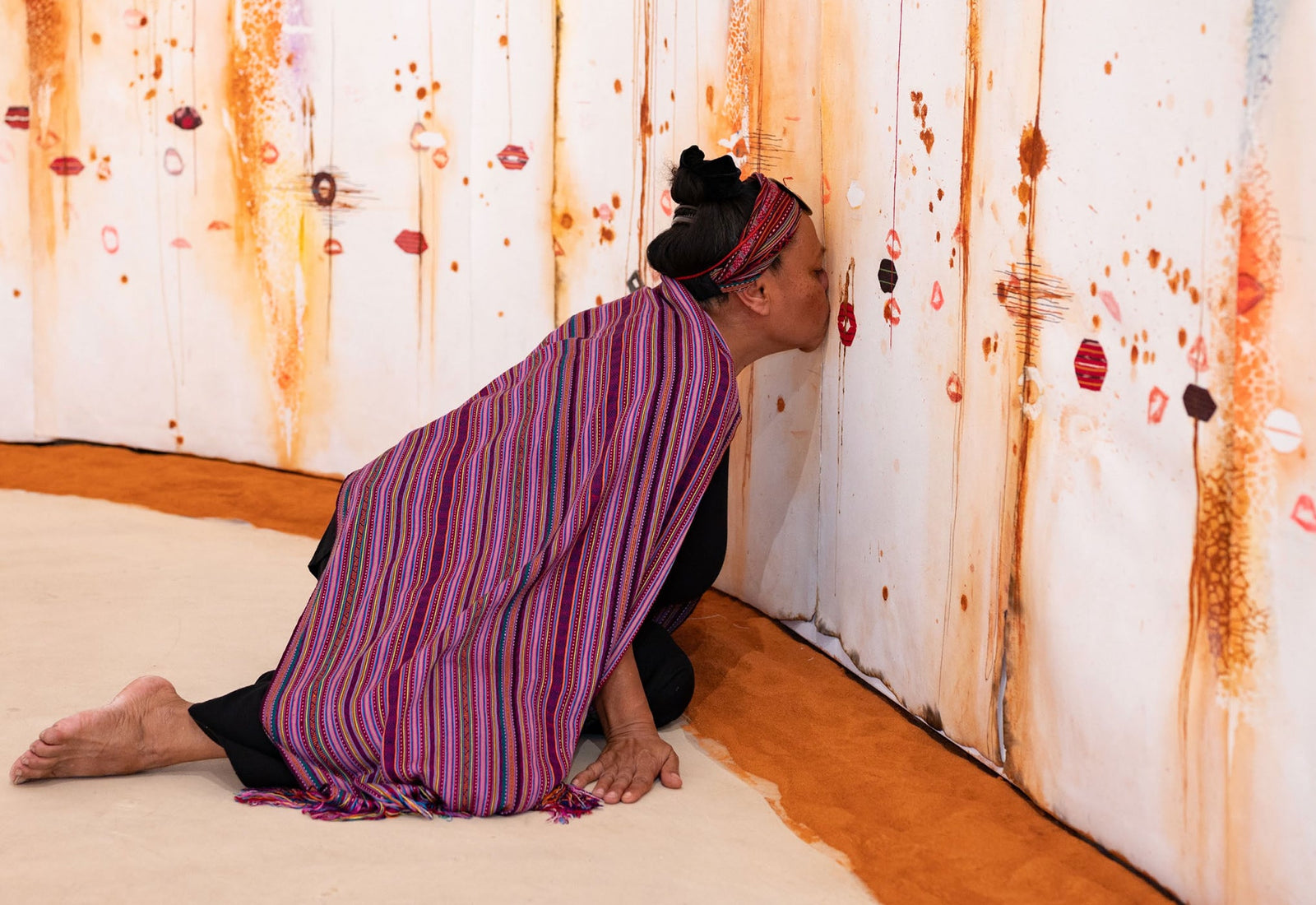Maria Madeira melds ancestral influences and traditional crafts with contemporary concerns for the plight of the voiceless. Her dexterous practice deploys material from her village, Gleno – in the Ermera region of Timor-Leste – including betel nut, tais (traditional weaving by women), red earth and sewing. She conflates the traditional with the contemporary, telling stories of loss, trauma, hope and healing from the women of Timor-Leste. By giving voice to the silenced, her work commemorates atrocities, yet it is imbued with hope and beauty.
In 1976, the Portuguese Air Force evacuated Madeira and her family from Dili after the Indonesian invasion. She spent most of the following eight years in a refugee camp run by the Red Cross on the outskirts of Lisbon in Portugal where she joined Coro Loro Sa’e choir, which was composed of up to 30 young, refugee girls. The choir and creativity became a refuge as did her mother’s intricately patterned crochet that she gifted to her daughter as a memento of their fraught history and multiple displacements.
Source: Vault - Australasian Art & Culture
View File: A Conversation Between Artist Maria Madeira
Image Credits: MARIA MADEIRA Kiss and Don’t Tell, 2024 Exhibition view: Timor-Leste Pavilion at the 60th Venice Biennale Photo: Cristiano Corte




